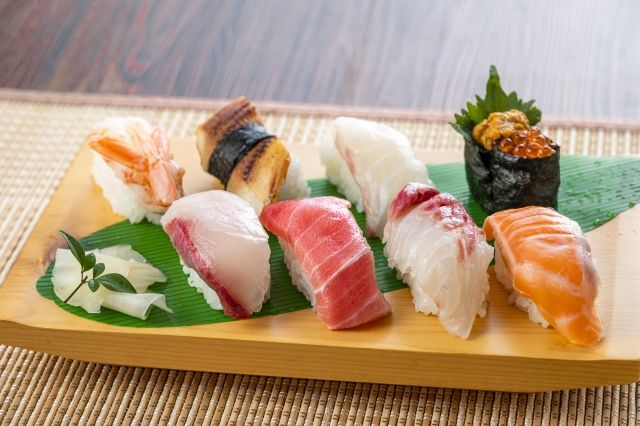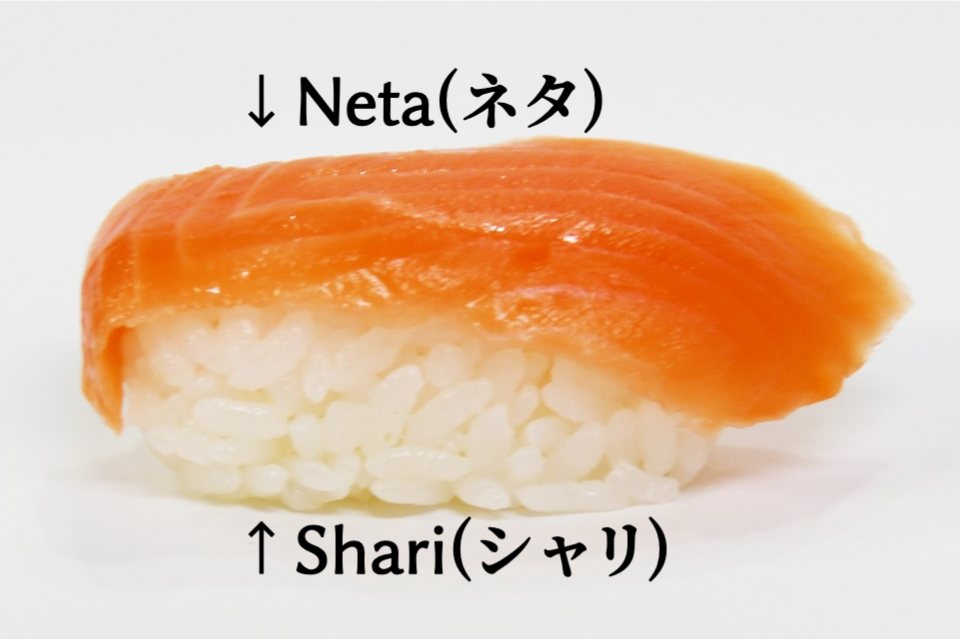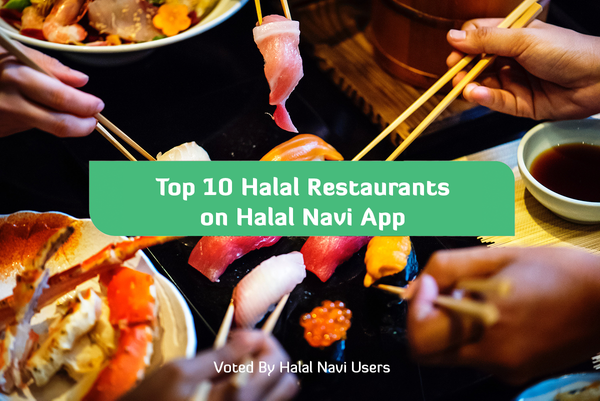Interesting things to know before eating sushi

*This delicacy might contain non halal ingredients
Sushi is arguably one of the most popular Japanese dishes.
This article will provide a general explanation of sushi as a part of Japanese culture, from the general definition and types of sushi to the etiquette and manners of eating it. This article is intended to be useful as tidbits of knowledge to help you enjoy sushi more flavorful and with more pleasure.
Definition/types of sushi
First, let's talk about the definition of sushi. Generally speaking, sushi is a Japanese dish that combines shari(シャリ) and neta (ネタ:mainly seafood). In addition to fresh seafood, other ingredients such as meat, vegetables, and eggs may also be used as ingredients.

Types of sushi include the following:
Nigirizushi :Most popular type of sushi.
(Bottom row, two on the left are called Gunkan, sushi with seaweed.)
Maki Sushi
Oshizushi
Chirashi Sushi
How to enjoy sushi?
These are suggested manners and eating styles when eating sushi at sushi restaurants. (You basically don't need to worry about this at a Kaiten Sushi restaurant.)
1. Nigiri Sushi may be eaten with chopsticks or by hand.
When you eat sushi, you can eat it with either your hands or chopsticks.
In fact, however, there is no problem whether you eat sushi with your hands or with chopsticks. Eating sushi with your hands has its own advantages, such as the fact that the rice is less likely to fall apart. The temperature of the sushi is less likely to change if you eat it with chopsticks, but you can eat sushi in any way you prefer.
When eating with your hands, the basic rule is to pick the fish from three directions with your thumb, index finger, and middle finger.
2. Nigiri Sushi should be eaten in one bite.
Sushi is often prepared and seasoned to be eaten in one bite. Some sushi chefs change the size of the nigiri according to the customer.
3. put soy sauce on the neta, not on the rice
When dipping sushi in soy sauce, the correct way is to dip the neta, not the rice, in soy sauce. The disadvantages of dipping the rice in soy sauce are that too much soy sauce will be applied to the rice, the rice will easily fall apart, and the rice will remain in the soy sauce dish and not look good.
4. Put the neta face down in your mouth.
This is not a manner, but a recommended way. Putting the neta face down in the mouth makes it easier for the neta to hit the tongue. This allows you to enjoy the taste of the sushi even more.
5. For Gunkan, put soy sauce on the cucumber and gari (seasoned ginger).
Although it was mentioned to lay the sushi on its side and put soy sauce on the ingredients, it is recommended to put soy sauce on the gari (ginger) as if applying it with a brush to the sushi before eating the gunkan, such as sea natto and salmon eggs. Also, if it does not fall apart, you can use a cucumber or other garnish to apply the soy sauce.
6. Gari is eaten in between sushi
Ginger dipped in sweet vinegar is the recommended way to eat gari in between. The refreshingly spicy, sweet and sour taste of gari helps to offset the taste of the previous ingredients.
In particular, when you eat something light such as flatfish after eating something strong-tasting such as sea eel or sea urchin, you can enjoy the original taste of the ingredients by eating gari in between.
7. When eating sushi, start with light flavored neta and end with a strong-flavored neta
This is also not a manner, but if you want to "enjoy sushi more" or "be thought of as knowing how to eat", start with light-flavored items and move on to more flavorful ones.
It is said that if you start with the strong-flavored sea eel, it will be difficult to taste the light-flavored sea bass or flatfish.
In many sushi restaurants in Japan, rice and soy sauce contain sake(alcohol).
“シャリ(shari)" is made by mixing rice with a seasoning called sushi vinegar. This sushi vinegar may contain a small amount of alcohol.In addition, regular soy sauce served in Japan contains a slight amount of alcohol.
However, there are sushi restaurants in Japan that are Halal certified!
Asakusa Sushi Ken is one of the Halal certified sushi restaurants in Tokyo.
Asakusa Sushi Ken
Asakusa Sushi Ken (浅草 すし賢) is Tokyo’s first Halal Sushi restaurant. Asakusa Sushi Ken only serve Halal ingredients including alcohol-free vinegar and soy sauce. You can enjoy amazing quality Sushi with selected fresh ingredients by the chef with over 10 years experience. pic.twitter.com/82WZq8jISA
— musafirhalal (@musafirhalal) September 26, 2021
Address: 1F & 2F, 2-11-4 Asakusa, Taitō-ku, Tōkyō-to 111-0032
Phone Number: 050-3184-0547
Hours: Weekdays: 11:30 a.m. - 11:00 p.m., lunch until 4:00 p.m.
Weekend & national holidays: 11:30 a.m. - 10:00 p.m., lunch until 3:00 p.m.
Halal Verification by: Crescent Rating Japan Halal Foundation
https://www.instagram.com/asakusasushiken/
Please use this app to find a Halal Sushi restaurant.





